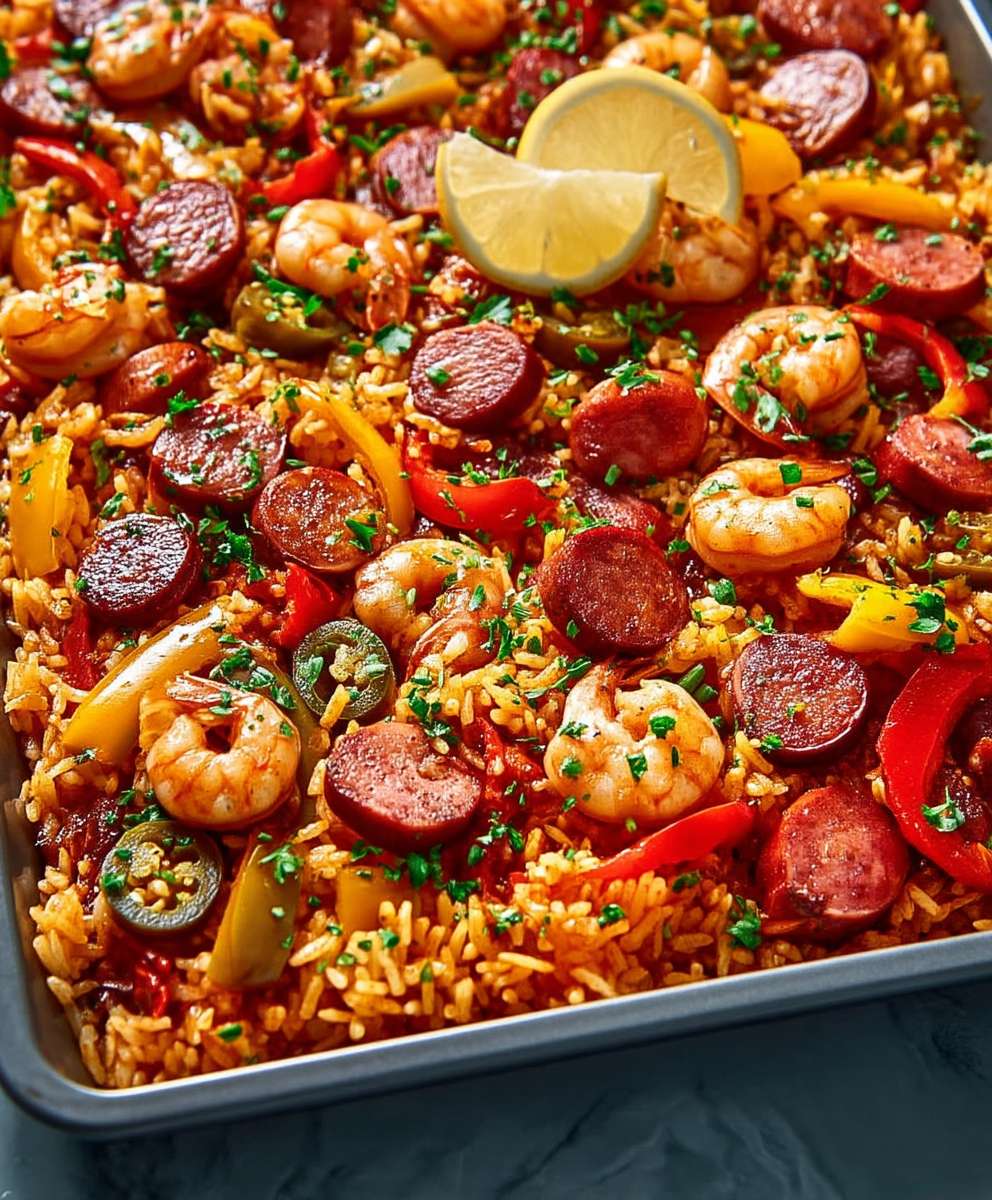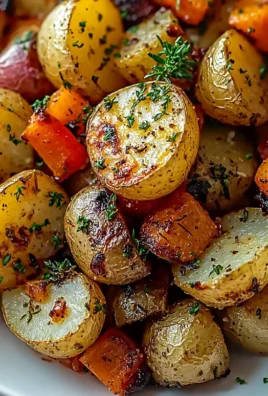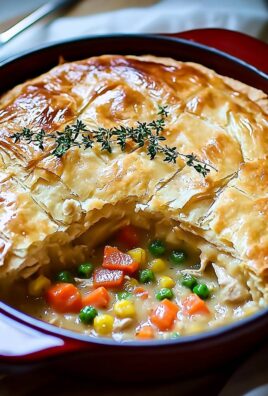Sheet Pan Jambalaya: Imagine a symphony of flavors, a vibrant tapestry of spices, and the sheer joy of a complete, satisfying meal, all cooked on a single sheet pan. Sounds too good to be true? It’s not! This simplified version of the classic Louisiana dish brings all the bold taste and comforting warmth of traditional jambalaya to your table with minimal effort and maximum flavor.
Jambalaya, a dish deeply rooted in Louisiana’s Creole and Cajun cultures, is a testament to the resourcefulness and culinary creativity of its people. Born from a blend of Spanish paella, French influence, and West African ingredients, jambalaya was traditionally a way to stretch ingredients and feed large families. Its a celebration of community and a symbol of Southern hospitality.
What makes jambalaya so universally loved? It’s the perfect combination of savory meats, fragrant rice, and a medley of vegetables, all infused with a unique blend of Cajun spices. The smoky and slightly spicy flavor profile is incredibly addictive, and the hearty texture is both comforting and satisfying. But let’s be honest, the traditional method can be a bit time-consuming. That’s where our Sheet Pan Jambalaya comes in! We’ve streamlined the process without sacrificing any of the authentic taste, making it the perfect weeknight meal for busy families and anyone craving a taste of Louisiana. Get ready to experience the magic of jambalaya in a whole new, easier way!

Ingredients:
- 1 tablespoon olive oil
- 1 pound Andouille sausage, sliced
- 1 pound boneless, skinless chicken thighs, cut into 1-inch pieces
- 1 large onion, chopped
- 1 green bell pepper, chopped
- 1 red bell pepper, chopped
- 3 cloves garlic, minced
- 1 (14.5 ounce) can diced tomatoes, undrained
- 1 (15 ounce) can tomato sauce
- 1 cup chicken broth
- 1 cup long-grain rice, uncooked
- 2 tablespoons Cajun seasoning
- 1 teaspoon dried thyme
- 1/2 teaspoon cayenne pepper (optional, for extra heat)
- 1 pound large shrimp, peeled and deveined
- 1/4 cup chopped fresh parsley, for garnish
- Salt and freshly ground black pepper to taste
Preparing the Sheet Pan:
- Preheat your oven to 400°F (200°C). This high temperature is crucial for ensuring the rice cooks properly and the vegetables roast nicely.
- Grab a large rimmed baking sheet. The rim is important to prevent any juices from spilling over during cooking. I like to use a 13×18 inch sheet pan, but anything similar will work.
- Lightly grease the sheet pan with olive oil. This will help prevent the rice from sticking to the bottom and make cleanup a breeze. You can use cooking spray if you prefer.
Cooking the Sausage and Chicken:
- Heat the olive oil in a large skillet over medium-high heat. You want the skillet to be nice and hot before adding the sausage and chicken.
- Add the sliced Andouille sausage to the skillet and cook for about 5-7 minutes, or until it’s browned and slightly crispy. The sausage will release some of its flavorful oils, which will add depth to the dish.
- Remove the sausage from the skillet and set it aside. Don’t discard the rendered fat in the skillet we’ll use it to cook the chicken.
- Add the chicken thighs to the same skillet and cook for about 5-7 minutes per side, or until they’re browned and cooked through. Make sure the internal temperature of the chicken reaches 165°F (74°C) for safety.
- Remove the chicken from the skillet and set it aside with the sausage.
Building the Jambalaya on the Sheet Pan:
- Now it’s time to assemble the jambalaya on the prepared sheet pan. Spread the chopped onion, green bell pepper, and red bell pepper evenly over the sheet pan.
- Add the minced garlic to the vegetables.
- Pour the diced tomatoes (undrained) and tomato sauce over the vegetables.
- Sprinkle the uncooked rice evenly over the tomato mixture. Make sure the rice is distributed in a single layer for even cooking.
- Pour the chicken broth over the rice.
- Season generously with Cajun seasoning, dried thyme, cayenne pepper (if using), salt, and freshly ground black pepper. Don’t be shy with the Cajun seasoning it’s what gives jambalaya its signature flavor!
- Stir everything together well to ensure the rice is submerged in the liquid and the vegetables are evenly coated with the seasonings.
- Arrange the cooked sausage and chicken pieces evenly over the rice and vegetable mixture.
Baking the Jambalaya:
- Cover the sheet pan tightly with aluminum foil. This is crucial for trapping the steam and allowing the rice to cook properly.
- Bake in the preheated oven for 30 minutes.
- Remove the foil and stir the jambalaya gently. This will help prevent the rice from sticking and ensure even cooking.
- Add the peeled and deveined shrimp to the sheet pan, nestling them among the rice and vegetables.
- Return the sheet pan to the oven (uncovered) and bake for another 10-15 minutes, or until the shrimp are pink and cooked through and the rice is tender and has absorbed most of the liquid. The cooking time may vary depending on your oven, so keep an eye on it.
Finishing Touches and Serving:
- Remove the sheet pan from the oven and let the jambalaya rest for 5-10 minutes before serving. This will allow the flavors to meld together and the rice to finish absorbing any remaining liquid.
- Garnish with chopped fresh parsley.
- Serve the sheet pan jambalaya hot. You can serve it directly from the sheet pan for a rustic presentation, or transfer it to a serving dish.
Tips and Variations:
- Spice Level: Adjust the amount of cayenne pepper to your liking. If you prefer a milder jambalaya, omit the cayenne pepper altogether.
- Vegetables: Feel free to add other vegetables to the jambalaya, such as celery, okra, or corn.
- Protein: You can substitute the chicken thighs with chicken breasts, but be sure to adjust the cooking time accordingly. You can also add other types of seafood, such as crawfish or mussels.
- Rice: Long-grain rice is the best choice for jambalaya, as it holds its shape well during cooking. Avoid using short-grain rice, as it can become mushy.
- Broth: You can use vegetable broth instead of chicken broth for a vegetarian version of jambalaya.
- Make Ahead: You can prepare the jambalaya up to the point of adding the shrimp ahead of time. Store it in the refrigerator and add the shrimp just before baking.
- Leftovers: Leftover jambalaya can be stored in the refrigerator for up to 3 days. Reheat it in the microwave or oven until heated through.
Why Sheet Pan Jambalaya is Awesome:
I love this sheet pan jambalaya recipe because it’s so easy to make and clean up. Everything cooks on one pan, which means fewer dishes to wash! It’s also a great way to feed a crowd, as you can easily double or triple the recipe. Plus, it’s packed with flavor and nutrients, making it a healthy and satisfying meal.
Troubleshooting:
- Rice is not cooked through: If the rice is still crunchy after the recommended cooking time, add a little more chicken broth and cover the sheet pan with foil again. Bake for another 10-15 minutes, or until the rice is tender.
- Jambalaya is too dry: If the jambalaya is too dry, add a little more chicken broth and stir gently.
- Jambalaya is too wet: If the jambalaya is too wet, remove the foil and bake for a few more minutes to allow the excess liquid to evaporate.
- Shrimp is overcooked: Be careful not to overcook the shrimp, as they can become rubbery. They should be pink and opaque when they’re done.
Serving Suggestions:
Sheet pan jambalaya is a complete meal on its own, but you can also serve it with a side of cornbread, coleslaw, or a simple green salad. It’s also great with a dollop of sour cream or a sprinkle of hot sauce.
Nutritional Information (approximate, per serving):
Calories: 450
Protein: 40g
Fat: 20g
Carbohydrates: 30g
Fiber: 3g
Enjoy your delicious and easy sheet pan jambalaya!

Conclusion:
So there you have it! This Sheet Pan Jambalaya is truly a game-changer for weeknight dinners or even a casual weekend gathering. I know, I know, jambalaya might seem intimidating, but trust me, this simplified version delivers all the authentic flavors without the fuss. The smoky sausage, tender chicken, perfectly cooked rice, and vibrant vegetables all come together in a symphony of deliciousness that will have everyone asking for seconds.
What makes this recipe a must-try? First and foremost, it’s incredibly easy. The sheet pan method minimizes cleanup, which is always a win in my book. Secondly, it’s packed with flavor. We’re talking about a rich, savory, and slightly spicy experience that will tantalize your taste buds. And finally, it’s versatile! You can easily customize it to your liking, swapping out ingredients based on what you have on hand or what your family prefers.
Looking for serving suggestions? I love to serve this Sheet Pan Jambalaya with a dollop of sour cream or Greek yogurt to cool things down a bit. A sprinkle of fresh cilantro or parsley adds a pop of freshness, and a side of crusty bread is perfect for soaking up all those delicious juices. For a complete meal, consider adding a simple green salad or some steamed green beans.
But the fun doesn’t stop there! Feel free to experiment with variations to make this recipe your own. If you’re a seafood lover, try adding some shrimp or crawfish during the last 15 minutes of cooking. For a vegetarian option, substitute the chicken and sausage with extra vegetables like bell peppers, zucchini, and eggplant. You could even add some black beans or chickpeas for extra protein. If you like it extra spicy, add a pinch of cayenne pepper or a dash of your favorite hot sauce.
Another great variation is to use different types of sausage. Andouille sausage is the classic choice for jambalaya, but you could also use chorizo, kielbasa, or even Italian sausage. Each type of sausage will add its own unique flavor profile to the dish.
Don’t be afraid to get creative with the vegetables too! While the recipe calls for onions, bell peppers, and celery, you could also add other vegetables like mushrooms, corn, or even okra. Just make sure to adjust the cooking time accordingly, as some vegetables may take longer to cook than others.
I truly believe that this Sheet Pan Jambalaya will become a staple in your recipe rotation. It’s quick, easy, flavorful, and customizable everything you could ask for in a weeknight meal. So, what are you waiting for? Gather your ingredients, preheat your oven, and get ready to experience the magic of jambalaya in a whole new way.
I’m so excited for you to try this recipe! Once you do, please come back and share your experience in the comments below. I’d love to hear about any variations you tried, what your family thought, and any tips or tricks you discovered along the way. Happy cooking! I can’t wait to hear how much you enjoyed this easy and delicious Sheet Pan Jambalaya.
Sheet Pan Jambalaya: Easy One-Pan Recipe for a Flavorful Meal
Easy and flavorful sheet pan jambalaya with Andouille sausage, chicken, shrimp, and rice, all cooked together on one pan for easy cleanup!
Ingredients
- 1 tablespoon olive oil
- 1 pound Andouille sausage, sliced
- 1 pound boneless, skinless chicken thighs, cut into 1-inch pieces
- 1 large onion, chopped
- 1 green bell pepper, chopped
- 1 red bell pepper, chopped
- 3 cloves garlic, minced
- 1 (14.5 ounce) can diced tomatoes, undrained
- 1 (15 ounce) can tomato sauce
- 1 cup chicken broth
- 1 cup long-grain rice, uncooked
- 2 tablespoons Cajun seasoning
- 1 teaspoon dried thyme
- 1/2 teaspoon cayenne pepper (optional, for extra heat)
- 1 pound large shrimp, peeled and deveined
- 1/4 cup chopped fresh parsley, for garnish
- Salt and freshly ground black pepper to taste
Instructions
- Prepare: Preheat oven to 400°F (200°C). Grease a large rimmed baking sheet (13×18 inch recommended) with olive oil.
- Cook Sausage & Chicken: Heat olive oil in a large skillet over medium-high heat. Add sausage and cook for 5-7 minutes, until browned. Remove and set aside. Add chicken thighs to the same skillet and cook for 5-7 minutes per side, until browned and cooked through (internal temperature 165°F/74°C). Remove and set aside with the sausage.
- Assemble Jambalaya: Spread chopped onion, green bell pepper, and red bell pepper evenly over the prepared sheet pan. Add minced garlic. Pour diced tomatoes (undrained) and tomato sauce over the vegetables. Sprinkle uncooked rice evenly over the tomato mixture. Pour chicken broth over the rice. Season generously with Cajun seasoning, dried thyme, cayenne pepper (if using), salt, and pepper. Stir everything together well. Arrange cooked sausage and chicken pieces evenly over the rice and vegetable mixture.
- Bake: Cover the sheet pan tightly with aluminum foil. Bake in the preheated oven for 30 minutes. Remove the foil and stir the jambalaya gently. Add the peeled and deveined shrimp to the sheet pan, nestling them among the rice and vegetables. Return the sheet pan to the oven (uncovered) and bake for another 10-15 minutes, or until the shrimp are pink and cooked through and the rice is tender and has absorbed most of the liquid.
- Serve: Remove from oven and let rest for 5-10 minutes. Garnish with chopped fresh parsley. Serve hot, directly from the sheet pan or in a serving dish.
Notes
- Spice Level: Adjust cayenne pepper to taste, or omit for a milder dish.
- Vegetables: Add other vegetables like celery, okra, or corn.
- Protein: Substitute chicken thighs with chicken breasts (adjust cooking time). Add crawfish or mussels.
- Rice: Use long-grain rice for best results.
- Broth: Use vegetable broth for a vegetarian version.
- Make Ahead: Prepare up to the point of adding shrimp, refrigerate, and add shrimp just before baking.
- Leftovers: Store in the refrigerator for up to 3 days. Reheat in the microwave or oven.
- Rice is not cooked through: Add a little more chicken broth and cover the sheet pan with foil again. Bake for another 10-15 minutes, or until the rice is tender.
- Jambalaya is too dry: Add a little more chicken broth and stir gently.
- Jambalaya is too wet: Remove the foil and bake for a few more minutes to allow the excess liquid to evaporate.
- Shrimp is overcooked: Be careful not to overcook the shrimp, as they can become rubbery. They should be pink and opaque when they’re done.
- Serving Suggestions: Serve with cornbread, coleslaw, or a green salad. Add sour cream or hot sauce.



Leave a Comment